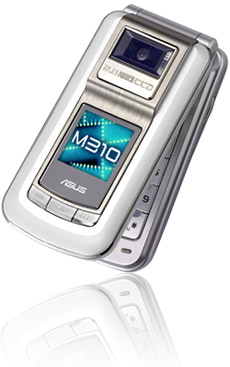 |
||
|
||
| ||
ATI RS700 - DirectX 10 On Board IBM And Georgia Tech Break Silicon Speed Record Panasonic Launches Its First DSLR Camera In July ASUS Delivers Handset With Autofocusing Camera ATI RS700 - DirectX 10 On Board The release of new integrated ATI RS600 IGP is expected only next month, but the sources, close to motherboard manufacturers, are already shedding light upon its successor RS700. This chipset will fully support DirectX 10 and Shader Model 4.0. At that graphics core will feature the same unified shader processor architecture, as the rumoured discrete R600. Avivo will migrate to RS700 from its predecessor that will be ATI's flagship until the mid-2007.  RS700 will be made using 65nm process technology. They won't have to redesign RS600 motherboards due to pin-compatibility. Thus it becomes clear that we won't see an integrated DirectX 9.0c / Shader Model 3.0 solution from ATI, as RS600 is said to feature a Radeon X700 based graphics core. Though, perhaps, up-to-date integrated graphics is not that critical for the top-end solutions capable of handling two or even three powerful discrete graphics cards. Unless ATI actually migrates physics calculations to integrated graphics cores... Source: HKEPC
IBM And Georgia Tech Break Silicon Speed Record IBM and the Georgia Institute of Technology announced today that their researchers have demonstrated the first silicon-based chip capable of operating at frequencies above 500 GHz -- 500 billion cycles per second -- by cryogenically "freezing" the chip to 451 degrees below zero Fahrenheit (4.5 Kelvins). Such extremely cold temperatures are found naturally only in outer space, but can be artificially achieved on Earth using ultra-cold materials such as liquid helium. (Absolute Zero, the coldest possible temperature in nature, occurs at minus 459.67 degrees Fahrenheit). By comparison, 500 GHz is more than 250 times faster than today's cell phones, which typically operate at approximately 2 GHz. Computer simulations suggest that the silicon-germanium (SiGe) technology used in the chip could ultimately support even higher (near-TeraHertz – 1,000 GHz) operational frequencies even at room temperature. The experiments, conducted jointly by IBM and Georgia Tech researchers, are part of a project to explore the ultimate speed limits of silicon-germanium (SiGe) devices, which operate faster at very cold temperatures. The chips used in the research are from a prototype fourth-generation SiGe technology fabricated by IBM on a 200-millimeter wafer. At room temperature, they operated at approximately 350 GHz. “For the first time, Georgia Tech and IBM have demonstrated that speeds of half a trillion cycles per second can be achieved in a commercial silicon-based technology, using large wafers and silicon-compatible low-cost manufacturing techniques,” said John D. Cressler, Byers Professor in Georgia Tech’s School of Electrical and Computer Engineering, and a researcher in the Georgia Electronic Design Center (GEDC) at Georgia Tech. “This work redefines the upper bounds of what is possible using silicon-germanium nanotechnology techniques.” Source: IBM
Panasonic Launches Its First DSLR Camera In July Panasonic, the brand for which Matsushita Electric Industrial Co., Ltd. is known, announced today the company will launch its first digital single-lens reflex (SLR) camera, the 7.5-megapixel LUMIX DMC-L1, on July 22, 2006 in Japan. The DMC-L1 is promised to offer a variety of innovative features, which include the Leica D VARIO-ELMARIT 14-50 mm/F2.8-3.5 lens, the world's first Leica lens designed for digital SLR cameras. The interchangeable lens is based on the new Four Thirds system open standard ensuring interchangeable lens mount capability. Adoption of the system lets users combine bodies and lenses made by other makers. The Leica D lens also incorporates Panasonic's MEGA Optical Image Stabilizer and the newly developed Venus Engine III LSI. The gyrosensors and the image processing LSI can detect every slight hand-shake at a sampling rate of up to 4,000 times per second to assure blur-free pictures.  The DMC-L1 has a full-time Live View function that allows users to compose a scene through the high-resolution LCD, in addition to an optical viewfinder. The Live MOS sensor has a full-time image output function that sends images directly to the LCD. The Live View function can be selected in both Auto Focus and Manual Focus modes. In Manual Focus, it allows the user to choose the focusing area and enlarge it as much as 10 times. Other key innovations include the Supersonic Wave Filter dust reduction system. The system uses supersonic vibration to instantly shake off any dust that can accumulate on the electrically charged sensor during lens changes. The DMC-L1 has a shutter speed dial on top of the camera body and an aperture ring on the lens barrel, providing the intuitive control of a conventional film camera. The black magnesium-alloy body is not only sturdy and lightweight but also stylish and chic in design. Like all LUMIX cameras, the DMC-L1 is compatible with the SD Memory Cards. Panasonic plans to produce 3,000 units of the DMC-L1 per month. Source: Panasonic
ASUS Delivers Handset With Autofocusing Camera ASUS today introduced the M310 mobile phone, which comes equipped with a built-in 2M-pixel, CCD digital camera and auto focus functions. Featuring the 2.2-inch, 320 x 240-resolution main display, the handset also supports 3GP video records and playbacks at 15 fps. The M310 provides a 1,000-item day planner, which enables synchronization with PC's Outlook to allow the users to have the latest schedule on both their handsets and computers. The M310 also offers daily, weekly and monthly viewing options for efficient schedule management. Also available are capacity for 1,000 phone numbers, 9 speed dials, 10 voice commands and 10 voice dials.  Specifications:
Source: ASUS
Write a comment below. No registration needed!
|
Platform · Video · Multimedia · Mobile · Other || About us & Privacy policy · Twitter · Facebook Copyright © Byrds Research & Publishing, Ltd., 1997–2011. All rights reserved. |